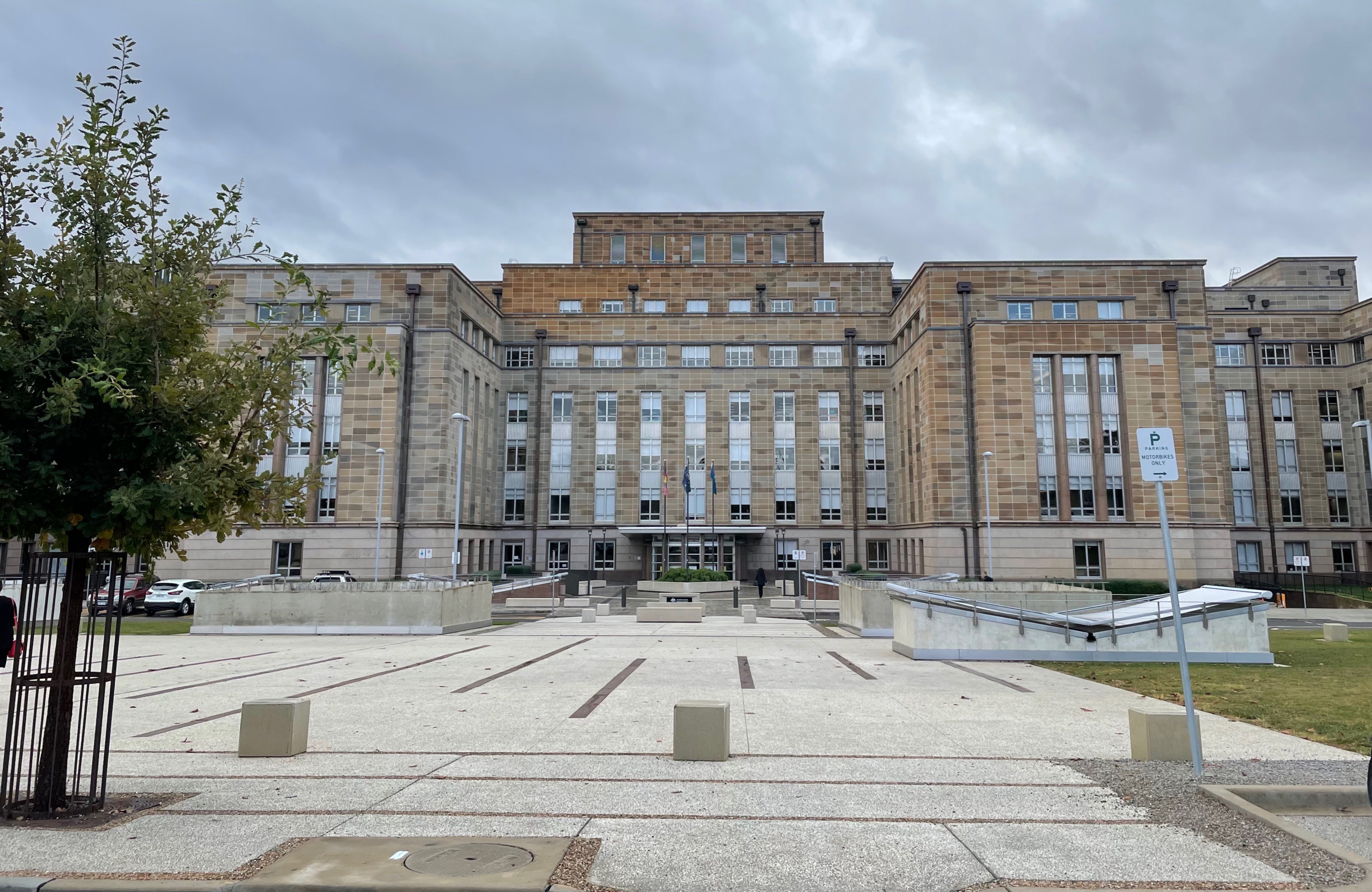John Gorton Building on:
[Wikipedia]
[Google]
[Amazon]
The John Gorton Building, also referred to as the Gorton Building and formerly the Administrative Building, is a heritage listed

government office
A government is the system or group of people governing an organized community, generally a state.
In the case of its broad associative definition, government normally consists of legislature, executive, and judiciary. Government is a ...
located within the Parliamentary Triangle
The National Triangle, which is referred to as the Parliamentary Triangle, is the ceremonial precinct of Canberra, containing some of Australia's most significant buildings. The National Triangle is formed by Commonwealth, Kings and Constitutio ...
in Canberra, Australia. The office building is the administrative headquarters of the Department of Climate Change, Energy, the Environment and Water.
Planned in 1924, designed in 1946 and completed in 1956, the Administrative Building is significant as a good Canberra example of the Inter-war Stripped Classical style. Key features of this style displayed by the building include: the symmetrical facades; the division of the elevations into vertical bays; the occasional use of correct Classical details; the use of a basic Classical column form; the expressed portico; the simple surface treatments; and subdued spandrels between the storeys which emphasise verticality. Design elements which retain a high level of integrity include the exterior, foyers, lift lobbies and central corridors.
The Administrative Building is also part of the significant cultural landscape of the Parliamentary triangle. It occupies a prominent and strategic location flanking the land axis in accordance with the 1916 Griffin plan. Together with the later Treasury Building balancing its mass across the central lawns of the land axis, the Administrative Building contributes to the planned aesthetic qualities of the Parliamentary triangle. The building was listed on the Commonwealth Heritage List
The Commonwealth Heritage List is a heritage register established in 2003, which lists places under the control of the Australian government, on land or in waters directly owned by the Crown (in Australia, the Crown in right of the Commonwealth ...
on 22 June 2004.
History
The building was first planned 1924, with construction breaking ground soon after in 1927. However, due to budgetary constraints and substandard foundation construction, the project was delayed indefinitely. It took until 1946 for construction to begin, designed in the Inter-war Stripped Classical style. It took a further ten years for the building to finally open in 1956. The entire construction project took place in the context of a large post-war expansion effort within Canberra. When the office building was first opened, it was occupied by the News and Information Bureau, the Department of the Interior, theDepartment of Health
A health department or health ministry is a part of government which focuses on issues related to the general health of the citizenry. Subnational entities, such as states, counties and cities, often also operate a health department of their ow ...
, and the Department of External Affairs In many countries, the Ministry of Foreign Affairs is the government department responsible for the state's diplomacy, bilateral, and multilateral relations affairs as well as for providing support for a country's citizens who are abroad. The entit ...
(DEA). The DEA and succeeding departments remained the building's primary occupant up until the late 1990s when the Department of Finance moved in. In 1999 the building was renamed to the John Gorton Building, after Australia's 19th prime minister
A prime minister, premier or chief of cabinet is the head of the cabinet and the leader of the ministers in the executive branch of government, often in a parliamentary or semi-presidential system. Under those systems, a prime minister i ...
, John Gorton
Sir John Grey Gorton (9 September 1911 – 19 May 2002) was an Australian politician who served as the nineteenth Prime Minister of Australia, in office from 1968 to 1971. He led the Liberal Party during that time, having previously been a l ...
.
Bunker
In 1974, construction began on a communications centre for the Department of Foreign Affairs (previously the Department of External Affairs), who were now the primary occupant of the building following an expansion during the cold war. The existing structure did not have the security nor space to house the communications equipment. In order to prevent spying and protect against foreign attacks, it was constructed with steel lined walls and a concrete super structure. Despite being often referred to as a "bunker
A bunker is a defensive military fortification designed to protect people and valued materials from falling bombs, artillery, or other attacks. Bunkers are almost always underground, in contrast to blockhouses which are mostly above ground. T ...
", it is not nor has it ever been a bunker.
By 2000, due to the modernization of the computer systems and their subsequent move to the main structure, the bunker was abandoned for several years. In 2003, the bunker was renovated and turned into office space for the newly occupying Department of Finance and remains in use today.
Despite the fact the existence of the bunker has always been public knowledge and today is openly visible from the outside, the bunker is the subject of urban legend
An urban legend (sometimes contemporary legend, modern legend, urban myth, or urban tale) is a genre of folklore comprising stories or fallacious claims circulated as true, especially as having happened to a "friend of a friend" or a family m ...
in Canberra to this day, being speculated to be in several different locations.

See also
* Australian non-residential architectural stylesReferences
Attribution
Bibliography
* * {{Canberra landmarks Office buildings in Canberra Landmarks in Canberra Commonwealth Heritage List places in the Australian Capital Territory 1956 establishments in Australia Government buildings completed in 1956 Neoclassical architecture in Australia Stripped Classical architecture